 Your new post is loading...
 Your new post is loading...
Even online, long copy has proven its effectiveness. Groove's founder Alex Turnball grew conversions by 100% when he tested a long-form landing page, and CrazyEgg saw conversion rates improve by 30% when it tested a long copy landing page.
With long copy, a brand can increase trust, break down the viewer's objections, and provide her with a better understanding of the product or solution. It gives your brand a chance to tell a more complete story, and in the process, more thoroughly convince the person that your brand is the best brand.
The main objective is to maximize the impact of every word and phrase. People do not read bad copy, irrelevant copy, and plain boring copy.
Check out the below examples of long copy to become a more prolific copywriter
What horror story ingredients are most common in viral creepypastas?
By viral creepypastas, I mean creepypastas with the most shares. I took a sample of 72 the most shared and most discussed creepypastas on four popular creepypasta sites: creepypasta.com, creepypasta.org, the Creepypasta Wiki, and reddit.com/r/creepypasta. I drew the samples from their list of highest rated, most discussed, and featured stories. I noticed that a handful of the same stories were repeated across the different sites, but I will touch on those later on.
After reading probably close to a hundred different creepypasta stories (probably some of the most fun research I’ve ever done), I made a list of a couple of the most common horror story elements found throughout 72 creepypastas. What I found was that all of the creepypastas contained a similar set of seven horror story elements–or, as I’m going to call them, creepypasta “ingredients”–despite being very different stories from one another. Although not every story contained all seven creepypasta ingredients.
Here are the seven ingredients for a popular creepypasta...
We still write as if people will read our work in print, but they don’t — they read on glass screens. As a result, you should include links in everything you write, from emails to reports. It will make your writing shorter and more powerful.
The versatility of links
As a blogger, I use links all the time. Once you realize how versatile they are, you become addicted. How many of these types of links do you use?
- Footnote-type links. A link to an article lets people check what you’re writing or go deeper — and they let you deliver traffic to somebody worth supporting.
- Calls to action. If you’re doing content marketing, you’ll want it to pay off in commerce, subscriptions, or some similar value.
- Internal links to showcase your value. My blog is a network of related content. My links reveal the value I’m trying to deliver.
- Easter eggs. Reward your readers with something fun if they click.
- Intranet links. In internal documents and emails, link to content on your intranet so you don’t have to include it.
- Opposing viewpoints. Links allow you to refer to an argument without getting into it.
- Canned searches. People forget that if you can type it in a browser window, you can put it in a link — including a link to a search.
I know links improve SEO. But I’m about meaning. Include links because they make your writing better — any SEO benefit just a nice plus....
After a while, you get sick and tired of writing. You just want to quit. Is it that notorious condition known as writer’s block? It could be, but in many cases it’s a little bit different. There are a few things going on:You’re bored with what you’re writing about. Boredom kills affection.You’ve exhausted your creative energy. Creativity, like a muscle, has its limits. Push it too hard, and it caves in.You need something more challenging. Lack of challenge -- goals, vision, perspective -- leads to disillusionment. You need some fresh experiences. Fresh experiences will give you a fresh perspective.It’s time to figure out how to get your brain back on task. How do you get past the drudgery and enjoy writing again? Let's talk through a few tips....
The Challenge is Simple. Day One: 3,000 words. And then each day after that add 1,000 words to the amount needed. Seven days, if my math is right, I will have a 42,000 word novel. 3,000… 4,000… 5,000… 6,000… 7,000… 8,000… 9,000 words. 7 Days. Day Seven (9,000 word day) Got the book done!!!! The goal today was at 9,000 words and needed to be the focus of my day because I had no idea how many words I would actually need to end this book. I had 3,000 words in the bank, so that helped the worry some....
Writing of any sort is hard, but rewarding work – you’ll gain a huge amount of satisfaction from a finished piece. Being creative can also be difficult and challenging at times, but immensely fun. How to get started Many people think that just because they’ve read a lot of stories (or even if they haven’t!) they should be able to write one. But as Nigel Watts writes: There is a common belief that because most of us are literate and fluent, there is no need to serve an apprenticeship if we want to become a successful wordsmith. … That’s what I thought until I tried to write my first novel. I soon learnt that a novel, like a piece of furniture, has its own set of requirements, laws of construction that have to be learnt. Just because I had read plenty of novels didn’t mean I could write one, any more than I could make a chair because I had sat on enough of them.(Nigel Watts, Teach Yourself Writing a Novel)...
Hemingway actually used denser punctuation than Jane Austen, William Faulkner, or Charles Dickens.and the way they use punctuation. Yet how much can the way authors use punctuation really reveal about their style?
Plenty, it turns out.Over on Medium, Adam Calhoun decided to strip eight of his favorite novels down to just the punctuation. The novels he chose were James Joyce'sUlysses, Jane Austen's Pride and Prejudice, Mark Twain's Huckleberry Finn, Charles Dickens's Great Expectations, Mary Shelley's Frankenstein, Cormac McCarthy's Blood Meridian, Lewis Carroll's Alice in Wonderland, Ernest Hemingway's A Farewell to Arms, and William Faulkner's Absalom! Absalom!...
Editing copy boils down to two key things: recognizing weaknesses and knowing how to fix them. It’s a critical part of the writing process and yet, one that’s all too often overlooked. After all, if you don’t know that there’s an issue to begin with, how can you fix it?
That's why, if you struggle with editing, you’re going to love this article ...
Because by the end of it, you’ll be armed with 10 powerful, uber-specific editing actions that’ll make your copy more addictive, engaging, and compelling than it was before you got to work revising it. Whether you’re writing a landing page, a blog article, an email, or a web page, making the following changes will have a profound impact on your readers.
Namely, these edits will make them more likely to do what you want them to do -- and that’s what great copy is all about....
Some people give me a hard time about how long my blog posts are (you know who you are). They tell me I should break my posts into smaller posts, or suggest I consider a 500-word post for a change. I deserve the razzing, particularly when I publish a couple of 3,000-word posts back-to-back.
In the absence of column inch or word limit restrictions, I’ll use as many words as I need to get my point across. It’s not that I don’t know how to write short posts, it’s just not my preferred style. If I’m limited to 140 characters (for now at least), I’ll use 140 characters. If I decide to write a 500-word post about how to write shorter blog posts, I can do it.
To prove my point, you’re actually reading that 500-word post I mentioned. Here are six of the most-helpful tips I’ve come across for writing shorter blog posts...
One of the reasons writing a great novel is so challenging is that there is no obvious starting place. Is it a character? A premise? A theme? A single sentence that won’t get out of your head?
While that argument continues to rage, what remains in less dispute is this: there are a set of principles and essential elements that, before the story works, you need to get right. With that in mind, this series introduces – reintroduces, actually, since these are the foundation of this body of work, and my three writing books – ten of those essential elements.
Today’s post defines and explores the one that is in the running for that Square One focus….
Last year I did a post for the Writers Digest website, explaining why (my opinion) “just write” is among the most dangerous soundbytes of writing advice ever uttered. It’s like telling someone about to on trial without a lawyer (an apropos analogy to trying to write a story without knowing how to write a novel) to skip law school and “just talk.” One reader commented in response that, because after years of practice some writers can indeed “just write” and be successful… I thank her for helping make my point.
There is a huge, hard-won backlog of knowledge and principle that makes anything that can otherwise be “made up as you go along” functional, if not downright fatal.
“Just do it” can get you killed, and it can kill your story, as well.
In that context, I’ve yet to encounter a writer who can disprove the existence or need for a largely given structure – the order and context for how a story should flow – for the rendering of long form storytelling....
The recent poll on the Now Novel blog reminded us of one of writers’ greatest challenges: finding time to write. Not knowing how to find time to write often simply means not prioritizing your writing.
Here is how 12 writers have made time in their own busy lives to prioritize their creative work and write...
Whether you're a published author or just getting started with blogging, it's not always easy to string words together in a way that makes sense, sounds good, and makes the reader feel something.
But every marketer should be able to write -- and, more importantly, every marketer can write. It's just a matter of finding the writing environment that works best for you, expanding your vocabulary, asking for feedback (and listening to it), and practicing.
Luckily, there are a slew of great tools you can use to help improve your writing. Check out the list below, and feel free to add the most helpful ones you use in the comment section....
|
The blank white screaming screen – it’s a dreadful entity for professionals belonging to any field. Because it’s always hard to start from scratch and take the first step.
As bloggers, meeting your editorial calendar deadlines is of utmost importance. But, once you’ve written blog posts in particular formats, you might find yourself in deep water. You fear that you no longer have a unique and compelling blog post idea to serve your audience.
For keeping your audience engaged, you’ll need to keep an editorial balance. But, lingering on the stressful feeling will only suck up a good amount of your time and energy.
In most cases of this kind of block, you’ll find that the inertia of motion will sail you through. You haven’t lost your ability to produce high-quality and value-adding content. You only need inspiration to come up with new engaging angles.
To help you in the writing cause, I want to share 6 tools and strategies with you....
As marketers, writers and crafters, we spend hours on bringing our content ideas to life and after all that effort, want our content to be seen. Writing powerful social media copy to grab people’s eyes and win their hearts is a challenge, though. And often, when our content isn’t breaking through the noise we can fix it with a few slight edits and tweaks. Editing content and copy is a key part of the creative process but is often overlooked. In this post, I’d love to share 11 editing tips and tricks to help you take your social media content to the next level....
I’m often asked how I wrote Putting Stories to Work. People want to know about the writing process and how I did the research. I had similar questions before I started including, How many words do I need to write? How many chapters should it be? What’s the best word processor? So in this post I want to share with you what I learned.
First let me describe the type of book I wanted to write. First and foremost it was important the book was replete with stories. It’s a capital offence to talk about storytelling and not tell a story. I also wanted it to be a practical book, a bit like David Allen’s How to Get Things Done. It was important that it was research based. I didn’t want to just say, for example, that stories are memorable without pointing to research that backs up my statement. I also wanted to share this research as stories of the experiments. This meant I was on the hunt for experimental research rather than theories. I read a lot of business books and I was inspired by Adam Grant, Malcolm Gladwell, Dan Pink and the Heath brothers, to name a few.
Do you know what the average attention span of a reader is today? It’s 8.2 seconds. You read that right. The average attention span of someone visiting your page is less than it takes you to drink a glass of water. You have less than 10 seconds to convince your readers that your content is more than good; you have to convince them that it’s remarkable.
Luckily, you can make your headlines way better if you pay attention to a couple of simple rules....
Run or hustle? Eat or devour? Move or scurry? You can boost the power of your copy by amping up the quality of verbs you use. Verbs show action, and the way you describe that motion can have a dramatic bearing on your readers. Why would you want to fill your copy with complacent words when you can conjure emotions and visual imagery in the hearts and minds of your readers? Sure, “run” and “hustle” both indicate that someone is moving fast. But “run” is a dull, ordinary verb while “hustle” evokes definite images in your reader’s mind.Hadn’t really thought about it? You should! You can choose commonplace verbs like “talk,” “make,” and “like,” or you can electrify your copy instead with verbs including “chatter,” “discover,” and “adore.” Look at these examples to see what I mean....
Any description I write for this collection will pale in comparison to the excellent copywriting examples contained herein.
Awesome Copywriting Examples
Any description I write for this collection will pale in comparison to the excellent copywriting examples contained herein....
The biggest problem with how people write now is that they are out of touch with how people read now. People read online, and the average article gets 20 seconds of attention.
But writing short is not so easy. It takes discipline. Poynter Institute senior scholar Roy Peter Clark wants to help you to develop that discipline. He is a student of everything from tweets to headlines to fortune cookies to song lyrics. In a series of short (of course) chapters, he opens your eyes to how short writers do what they do.
As he says, “When it comes to the how of short writing, you will find three paths: learning short writing through reading; practicing the best short writing moves; and cutting longer texts down to size.” This is what he teaches; you should learn it....
Podcasts are the perfect way to listen to a conversation about your writing craft or business. Think of it as professional development—accompanied by a chance to rest your eyes.
Podcasts aren’t new, but they’re seeing an exciting surge in listenership. The problem with podcasts is that there are so many options to choose from.
There’s no shortage of writing-focused podcasts by amateurs and experts alike. Here, we’ve compiled 15 podcasts worth subscribing to.
Let the writer beware: You might find yourself binge-listening for hours....
The fantasy world of merger announcements bears no resemblance to the reality of mergers. Michael Dell’s post about the Dell-EMC merger is a fine example.
Why do companies merge? There’s always language about “complementary skills and assets,” but that’s always bullshit. There is always language about “serving customers better” but that is also bullshit.
Companies merge for growth — period. It’s not about customers. It’s about money.There are two basic merger scripts, none of which you will ever read, and both of which are bad for customers....
So you’ve heeded Google’s warning, you’ve got your website mobile friendly, but is your content optimised for mobile users too?
A paragraph of text on a large screen can seem like an essay on a mobile device. Take the time to break your content up into easy to follow slices in order to provide mobile visitors with the best possible user experience.
Vertical Leap share some great tips to help you achieve this in the infographic below....
Coming up with exciting content is a bit tricky though, not just because everything has already been done to death, so it’s hard to come up with anything original, but also because once you set out to create it, it seems as if everything is turning against you and wants to prevent you from creating it. You name it: procrastination (although that one is on you), writer’s block (a little bit on you), distractions, the agony of having to edit your work, the list is seemingly endless.
We've mentioned tools to help with content marketing several times at Smart Insights. We thought it worth mentioning these tools because whilst you may already be using the likes of Trello and Hootsuite, these less well-known tools may also help you be that extra bit more effective when it comes to writing content....
|
 Your new post is loading...
Your new post is loading...
 Your new post is loading...
Your new post is loading...


















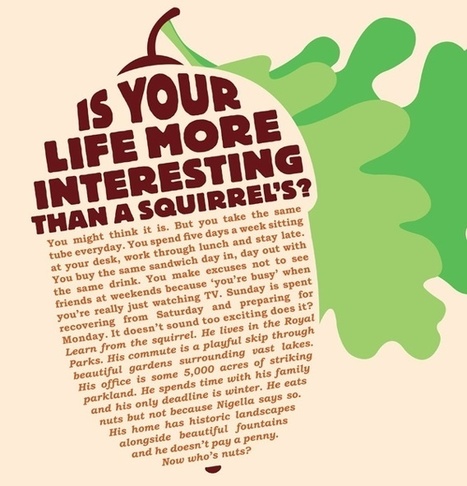

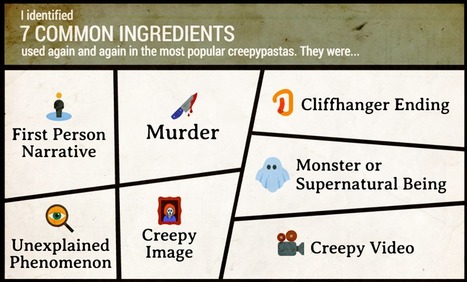


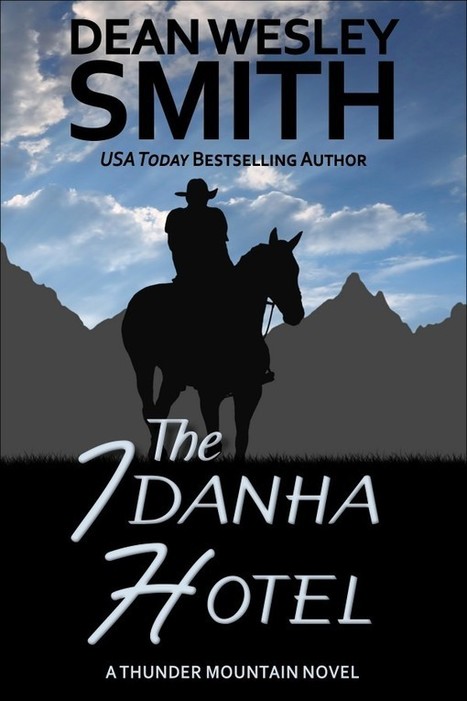




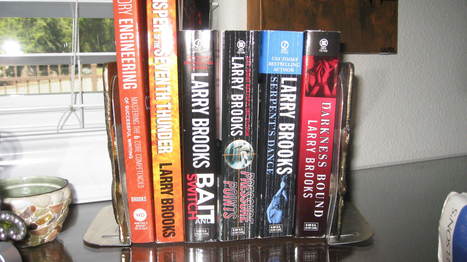





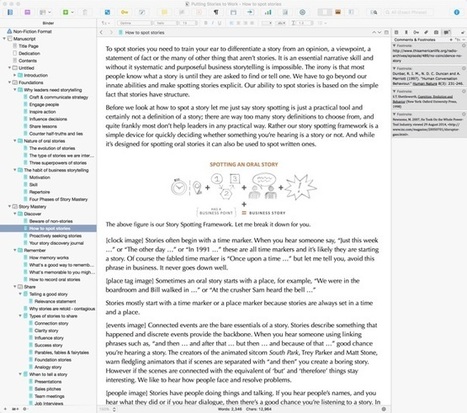















20 great examples of inspirational long copy ads.